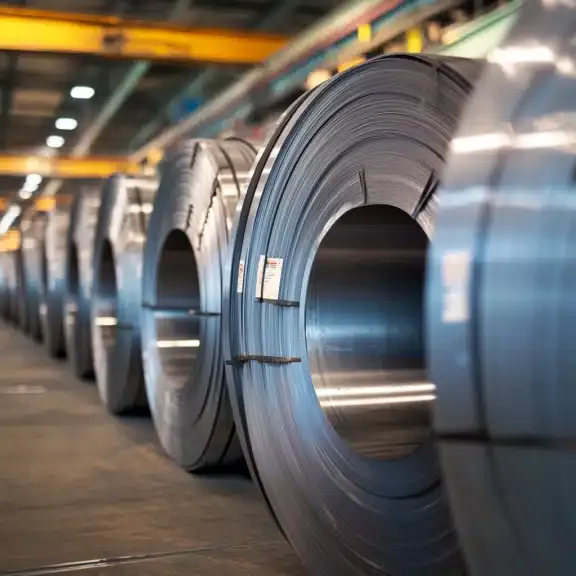Introduction
Steel plate coils form a vital element in most industries, acting as the backbone of construction, manufacturing, and transport. Rolled steel plates used in coils are universally applied because they are strong, durable, and versatile. Whether in infrastructure, shipbuilding, or automobile manufacture, steel plate coils offer crucial structural support and stability.
This article explores the features, forms, production methods, uses, and advantages of steel plate coils, and why they are still an important material in industrial and commercial industries.
What Are Steel Plate Coils?
Steel plate coils consist of massive plates of steel rolled into coiled form for convenience in transport, storage, and processing. They have several thicknesses and grades, depending on the intended use. The steel employed in such coils can be high-quality carbon steel, stainless steel, or alloy steel with varying mechanical properties and environmental factor resistance such as corrosion, heat, and pressure.
Types of Steel Plate Coils
Steel plate coils are categorized based on their manufacturing process, composition, and usage. The most common types include:
1. Hot Rolled Steel Coils
Hot rolled steel coils are produced by heating steel above its recrystallization temperature and then rolling it into the desired thickness. These coils have a rough surface finish but are highly malleable, making them ideal for applications requiring structural strength.
Applications:
- Construction (bridges, buildings, and pipelines)
- Shipbuilding
- Heavy machinery manufacturing
2. Cold Rolled Steel Coils
Cold rolled steel coils are processed at room temperature after being hot rolled. This method enhances the surface finish, increases strength, and improves dimensional accuracy.
Applications:
- Automotive body panels
- Appliances
- Furniture manufacturing
3. Galvanized Steel Coils
These coils are coated with a layer of zinc to prevent rust and corrosion, making them highly durable for outdoor and marine applications.
Applications:
- Roofing and siding
- Electrical panels
- Structural applications in humid environments
4. Stainless Steel Coils
Composed of iron, chromium, and other alloying elements, stainless steel coils offer excellent corrosion resistance, making them suitable for food processing, medical, and chemical industries.
Applications:
- Kitchen equipment
- Pharmaceutical production
- Aerospace components
Manufacturing Process of Steel Plate Coils
The production of steel plate coils involves several critical steps, ensuring high-quality and durable products.
1. Melting and Casting
Raw iron ore and recycled steel are melted in a furnace and cast into slabs or billets.
2. Rolling Process
- Hot Rolling: The steel slabs are heated and rolled into thinner plates.
- Cold Rolling: The hot rolled plates undergo further processing to achieve precise dimensions and a smoother finish.
3. Surface Treatment
Depending on the type of coil, the surface may be coated with zinc (galvanization) or treated with other finishes to enhance corrosion resistance.
4. Cutting and Coiling
The steel plates are cut to the required width and coiled for easier transportation and storage.
Applications of Steel Plate Coils
Steel plate coils play a significant role in numerous industries, ensuring strength and reliability in various structures and components.
1. Construction Industry
Steel plate coils are extensively used in construction for manufacturing beams, columns, and reinforcements. Their high tensile strength makes them ideal for bridges, skyscrapers, and tunnels.
2. Automotive Industry
Car manufacturers rely on steel plate coils for vehicle frames, doors, and chassis. The use of cold rolled and galvanized steel improves durability while maintaining a lightweight design for fuel efficiency.
3. Shipbuilding and Marine Industry
Hot rolled steel plate coils are widely used in ship construction due to their ability to withstand harsh marine environments. Galvanized and stainless steel coils are also used for corrosion resistance.
4. Energy Sector
Steel plate coils are utilized in the production of oil rigs, wind turbines, and pipelines, ensuring durability under extreme conditions.
5. Manufacturing and Machinery
Industries producing heavy machinery, industrial equipment, and appliances use steel plate coils due to their strength and ability to withstand mechanical stress.
Advantages of Using Steel Plate Coils
The popularity of steel plate coils stems from their numerous advantages:
1. High Strength and Durability
Steel plate coils offer exceptional mechanical strength, making them capable of withstanding heavy loads and extreme conditions.
2. Corrosion and Rust Resistance
Certain types, like galvanized and stainless steel coils, resist corrosion, increasing their lifespan in harsh environments.
3. Versatility
These coils can be easily processed into different shapes, sizes, and applications, catering to various industries.
4. Cost-Effective
Despite their high quality, steel plate coils offer a cost-effective solution for large-scale manufacturing and construction projects.
5. Sustainability and Recyclability
Steel is 100% recyclable, making steel plate coils an environmentally friendly option for sustainable construction and production.
Conclusion
Steel plate coils are vital in today’s industries, with unmatched strength, durability, and versatility. From construction projects to automobile manufacturing and power generation, these coils remain a first choice material because of their superior mechanical properties and affordability.
As technology in steel production advances, demand for high-performance steel plate coils will increase, underpinning industries that need reliability and efficiency in their structural elements. Whether for mass construction or precision engineering, steel plate coils are a key material driving the future of industrial growth.

